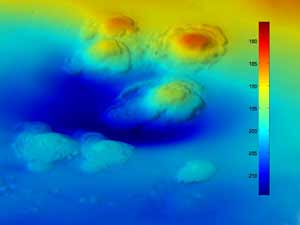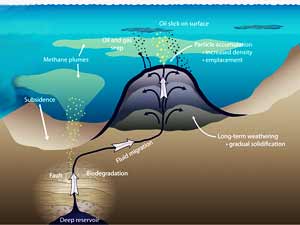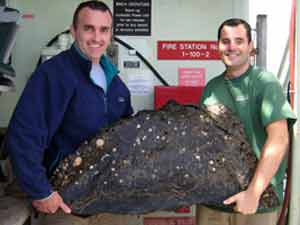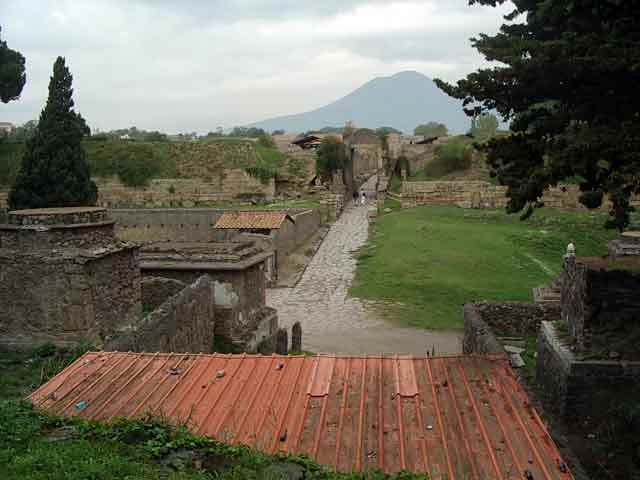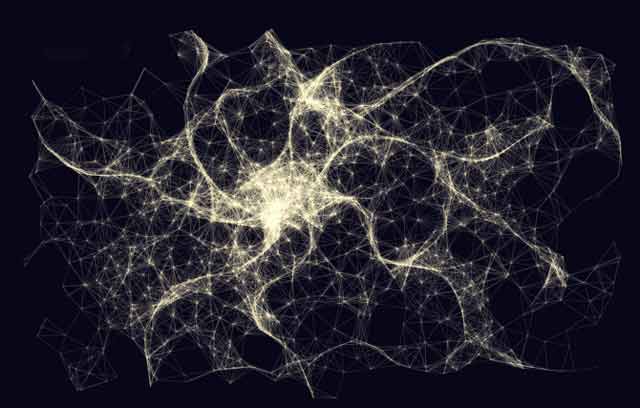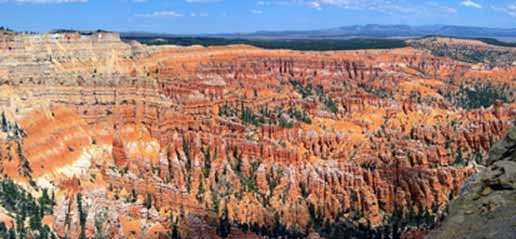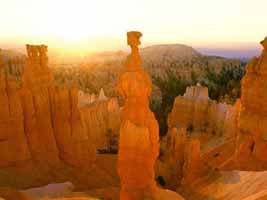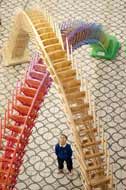News and Site Updates Archive 2010/05/16
Institutions will try to preserve the problem to which they are the solution.
— Clay Shirky
15 May '10 - (Sonsuz Arama is Turkish for "Infinite Search")
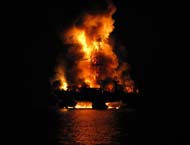 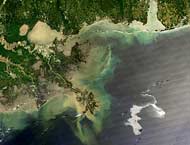 The Deepwater Horizon drilling rig The Deepwater Horizon drilling rig (which burned then sank in the Gulf of Mexico) cost
the lives of many men and injured even more. The rig belonged to Transocean, world’s biggest offshore drilling contractor; it had been contracted through the year 2013 to BP at a cost of about $500,000
per day. The full drilling spread (with helicopters, support vessels and other services) cost almost $1,000,000 per day to operate in the course of drilling for oil and gas. It cost $350,000,000 to
build in 2001 and will cost at least double that to replace. The rig represented the cutting edge of drilling technology - floating, capable of working in up to 8,000 feet of water, and no mooring
required as it didn't need anchors, instead utilising a triply-redundant computer system using satellite positioning to control powerful thrusters that kept the rig on station within a few feet of its
intended location. (This is called Dynamic Positioning.) The rig had just finished cementing a steel casing in place at depths exceeding 18,000 feet and was about to move to its next drilling
location, returning later to complete work necessary to bring the well into production. Somehow, formation fluids must've leaked undetected into the wellbore. With a floating drilling rig setup
moving with waves, currents, and winds as it does, the main pressure control equipment sits on the seabed – the highest unmoving point. This equipment, the Blowout Preventers (BOPs), are controlled with
redundant systems from the rig. In the event of serious emergency, there are multiple Panic Buttons to hit and fail-safe Deadman systems that automatically engage. None were activated, suggesting
this blowout was especially swift to escalate, with 200- to 300-foot-high flames visible up to 35 miles away. The satellite photo emphasises the delicate (soon to be former?) ecosystem of the Louisiana
coast.
  The Solar Dynamics Observatory (SDO) recorded a massive eruption on the sun — one of the largest in years. A
billion tons of magnetised plasma blasted into space while debris from the explosion fell back onto the sun surface. The resulting movie clip, 32 seconds long, spans 4 hours of actual time and more than
100,000 kilometres of linear space. Astronomers have seen eruptions like this before, but rarely so large and never in such fluid detail. The plasma which falls back onto the sun is called coronal
rain. It has been a mystery until now why, with the sun's gravity so powerful, it seems to fall so slowly (in the movie, it looks fairly normal, but 4 hours are being shown in 32 seconds, don't
forget). It appears that the hot air bubbles it must fall through are to blame. (Gee - who'd have thought?) The movie, 25 meg in Quicktime format, can be downloaded to your desktop (there are 2
versions - one colour-coded to better show heat). Or they can be viewed on You Tube here and here. And this is a flare recorded last month - quite good, with a wider field
of view. (By the way: If you shrink the sun to the size of a basketball, the earth would only be the size of the head of a pin. I knew you'd want to know.) The Solar Dynamics Observatory (SDO) recorded a massive eruption on the sun — one of the largest in years. A
billion tons of magnetised plasma blasted into space while debris from the explosion fell back onto the sun surface. The resulting movie clip, 32 seconds long, spans 4 hours of actual time and more than
100,000 kilometres of linear space. Astronomers have seen eruptions like this before, but rarely so large and never in such fluid detail. The plasma which falls back onto the sun is called coronal
rain. It has been a mystery until now why, with the sun's gravity so powerful, it seems to fall so slowly (in the movie, it looks fairly normal, but 4 hours are being shown in 32 seconds, don't
forget). It appears that the hot air bubbles it must fall through are to blame. (Gee - who'd have thought?) The movie, 25 meg in Quicktime format, can be downloaded to your desktop (there are 2
versions - one colour-coded to better show heat). Or they can be viewed on You Tube here and here. And this is a flare recorded last month - quite good, with a wider field
of view. (By the way: If you shrink the sun to the size of a basketball, the earth would only be the size of the head of a pin. I knew you'd want to know.)

And if you like great photos of the sun, you may like this one as well.
This composite view covers extreme ultraviolet wavelengths and traces hot plasma at temperatures approaching 1 million Kelvin.
 Both open- and closed-cell cumulus cloud patterns form in the Pacific Ocean off the coast of Peru. These cells, or parcels of air, often occur in
roughly hexagonal arrays in a layer of fluid (the atmosphere often behaves like a fluid) that begins to "boil" or convect, due to heating at the base or cooling at the top of the layer. In "closed" cells
warm air rises in the centre, and sinks around the edges so clouds appear in cell centres but evaporate around edges. The reverse flow can also occur: air can sink in the centre of the cell and rise at
the edges. This process is called "open cell" convection, and clouds form at cell edges around open centres, creating a lacy, hollow-looking pattern. Closed- and open-cell convection represent two
stable atmospheric configurations — two sides of the convection coin. But what determines which path the boiling atmosphere will take? Apparently the process is highly chaotic, with no way to
predict whether convection will result in open or closed cells. Indeed, the atmosphere may sometimes flip between one mode and another in no predictable pattern. Both open- and closed-cell cumulus cloud patterns form in the Pacific Ocean off the coast of Peru. These cells, or parcels of air, often occur in
roughly hexagonal arrays in a layer of fluid (the atmosphere often behaves like a fluid) that begins to "boil" or convect, due to heating at the base or cooling at the top of the layer. In "closed" cells
warm air rises in the centre, and sinks around the edges so clouds appear in cell centres but evaporate around edges. The reverse flow can also occur: air can sink in the centre of the cell and rise at
the edges. This process is called "open cell" convection, and clouds form at cell edges around open centres, creating a lacy, hollow-looking pattern. Closed- and open-cell convection represent two
stable atmospheric configurations — two sides of the convection coin. But what determines which path the boiling atmosphere will take? Apparently the process is highly chaotic, with no way to
predict whether convection will result in open or closed cells. Indeed, the atmosphere may sometimes flip between one mode and another in no predictable pattern.
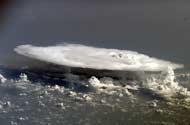 Cumulonimbus (from
the Latin for "pile" and "rain cloud") clouds form due to vigorous convection (rising and overturning) of warm, moist, and unstable air. Surface air is warmed by the sun-heated ground and rises; if
sufficient atmospheric moisture is present, water droplets condense when the air mass encounters cooler air at higher altitudes. The air mass itself also expands and cools as it rises due to decreasing
atmospheric pressure, a process known as adiabatic cooling. This type of convection is common in tropical latitudes year-round and during the summer season at higher latitudes. If enough moisture
is present to condense and heat the cloud mass through several convective cycles, a tower can rise to altitudes of approximately 10 kilometres at high latitudes and to 20 kilometres in the tropics before
encountering a region of the atmosphere known as the tropopause (boundary between the troposphere and the stratosphere). The tropopause halts further upward motion of the cloud mass so the cloud tops
flatten and spread into an anvil shape, as illustrated by this astronaut photograph. The high energy levels of these storm systems typically make them hazardous due to associated heavy precipitation,
lightning, high wind speeds and possible tornadoes. Cumulonimbus (from
the Latin for "pile" and "rain cloud") clouds form due to vigorous convection (rising and overturning) of warm, moist, and unstable air. Surface air is warmed by the sun-heated ground and rises; if
sufficient atmospheric moisture is present, water droplets condense when the air mass encounters cooler air at higher altitudes. The air mass itself also expands and cools as it rises due to decreasing
atmospheric pressure, a process known as adiabatic cooling. This type of convection is common in tropical latitudes year-round and during the summer season at higher latitudes. If enough moisture
is present to condense and heat the cloud mass through several convective cycles, a tower can rise to altitudes of approximately 10 kilometres at high latitudes and to 20 kilometres in the tropics before
encountering a region of the atmosphere known as the tropopause (boundary between the troposphere and the stratosphere). The tropopause halts further upward motion of the cloud mass so the cloud tops
flatten and spread into an anvil shape, as illustrated by this astronaut photograph. The high energy levels of these storm systems typically make them hazardous due to associated heavy precipitation,
lightning, high wind speeds and possible tornadoes. They paved paradise and, it turns out, actually did put up a parking lot - a big one. Some 700 feet deep in the waters off Santa Barbara, California’s jewel of a coastal resort, sits
a group of recently-discovered football-field-sized asphalt domes unlike any other underwater features known to
exist. About 35,000 years ago, a series of apparent undersea volcanoes deposited massive flows of petroleum 10 miles offshore. The deposits hardened into domes. There hasn't been an
opportunity until now to study oil that’s been sitting around on the bottom of the ocean for millennia. The largest dome is the size of two football fields side by side, as tall as a 6-story building,
and together the domes contain some 100,000 tons of residual asphalt. Researchers are not sure exactly why sea life has taken up residence around the domes, but one possibility is that the oil has
become benign over the years and some creatures are able to feed off it. Others may thrive on minute amounts of methane gas released from tiny holes in the domes. These extinct asphalt volcanoes
were mapped using the autonomous underwater vehicle Sentry and investigated using the submersible Alvin. The schematic diagram highlights the formation and associated release of oil and
methane to the surroundings. The sample is surprising light in weight compared to a rock of the same size.
 In a recent psychological study, volunteers were shown two 10-minute slide shows on two different
days. The first one was neutral, with pictures of furniture. The second was one of two options: a disease slide show, depicting people with pox, blowing their noses, sneezing, and so forth, or one
of guns. Before and after the slide shows, a blood sample was taken from each volunteer. Bacteria was added to the samples, then researchers measured the strength of the immune response
(specifically, how much interleukin-6 the immune cells produced). People who saw the slides of people
sneezing, coughing, or otherwise showing signs of disease had a stronger immune response than people who saw photos of men aiming guns at them. This kind of response to the sight of diseased people
may have been evolutionarily adaptive - although an aggressive immune response has infection-fighting benefits, it's also costly, consuming energy and temporarily debilitating the body. But it may be
worthwhile for an immune system to react especially aggressively when additional information indicates that the threat of infection is imminent. In a recent psychological study, volunteers were shown two 10-minute slide shows on two different
days. The first one was neutral, with pictures of furniture. The second was one of two options: a disease slide show, depicting people with pox, blowing their noses, sneezing, and so forth, or one
of guns. Before and after the slide shows, a blood sample was taken from each volunteer. Bacteria was added to the samples, then researchers measured the strength of the immune response
(specifically, how much interleukin-6 the immune cells produced). People who saw the slides of people
sneezing, coughing, or otherwise showing signs of disease had a stronger immune response than people who saw photos of men aiming guns at them. This kind of response to the sight of diseased people
may have been evolutionarily adaptive - although an aggressive immune response has infection-fighting benefits, it's also costly, consuming energy and temporarily debilitating the body. But it may be
worthwhile for an immune system to react especially aggressively when additional information indicates that the threat of infection is imminent.
 Laughter is a highly complex process. Joyous or mirthful laughter is considered a positive stress (eustress) that involves
complicated brain activities leading to a positive effect on health. Political journalist Norman Cousins in the 1970s first
suggested the idea that humour and associated laughter could benefit a person's health. His ground-breaking work, as a layperson diagnosed with an autoimmune disease, documented his use of laughter in
treating himself — with medical approval and oversight — into remission. He published his personal research results in the New England Journal of Medicine and is considered one of the original
architects of mind-body medicine. Since the 1980s, researchers have studied the human body's response to mirthful laughter and have found that laughter optimises functions of various body systems,
including hormones in the endocrine system (by decreasing levels of cortisol and epinephrine, thus reducing stress) and antibodies in the immune system (by increasing production and activation of the body's
protective cells including T-cells and tumour-suppressing cells). Repetitious "mirthful laughter" causes the body to respond in a way similar to moderate physical exercise, enhancing mood, lowering bad
cholesterol and systolic blood pressure, and raising good cholesterol. Laughter is a highly complex process. Joyous or mirthful laughter is considered a positive stress (eustress) that involves
complicated brain activities leading to a positive effect on health. Political journalist Norman Cousins in the 1970s first
suggested the idea that humour and associated laughter could benefit a person's health. His ground-breaking work, as a layperson diagnosed with an autoimmune disease, documented his use of laughter in
treating himself — with medical approval and oversight — into remission. He published his personal research results in the New England Journal of Medicine and is considered one of the original
architects of mind-body medicine. Since the 1980s, researchers have studied the human body's response to mirthful laughter and have found that laughter optimises functions of various body systems,
including hormones in the endocrine system (by decreasing levels of cortisol and epinephrine, thus reducing stress) and antibodies in the immune system (by increasing production and activation of the body's
protective cells including T-cells and tumour-suppressing cells). Repetitious "mirthful laughter" causes the body to respond in a way similar to moderate physical exercise, enhancing mood, lowering bad
cholesterol and systolic blood pressure, and raising good cholesterol.

Century City and downtown Los Angeles are seen through the smog 31 December 2007.
The American Cancer Society said known risks causing most cases of cancer include tobacco, obesity, alcohol, infections, hormones, and sunlight.
(Not smog? I'll be at this location in a couple of days - I'm hoping for Santa Ana winds.)
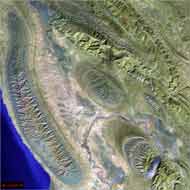 Iran has never
threatened or attacked the US, though the CIA removed a democratically elected Prime Minister, Dr Mohammed Mossadegh, in 1953. (This coup was the first time the US openly overthrew an elected, civil
government but it would not be the last.) His "crime" was wanting to control Iranian oil for Iranians. America installed the hated Shah, who maintained control through the use of Savak, his rather
savage secret police. Radical mullahs eventually took over and expressed popular hatred for everything American. While I am far from a Ron Paul fan (he's a US Congressman from Texas), he does at
least seem sensible on the subject of a US-Iran war. His April statement to the House included this: "I object to this entire push for war on Iran, however it is disguised. Listening to the debate
on this motion and the underlying bill it feels as if we are back in 2002 all over again: the same falsehoods and distortions used to push the United States into a disastrous and unnecessary trillion-dollar
war on Iraq are being trotted out again to lead us to what will likely be an even more disastrous and costly war on Iran. The parallels are astonishing. We hear war advocates scare-mongering about
reports that in one year Iran will have missiles that can hit the US. Where have we heard this bombast before? Anyone remember the claims that Iraqi drones were going to fly over and attack
us? These 'drones' ended up being pure propaganda – the UN chief weapons inspector concluded in 2004 that there was no evidence that Saddam Hussein had ever developed unpiloted drones for use on enemy
targets. Of course by then the propagandists had gotten their war so the truth did not matter much. We hear war advocates today arguing that we cannot afford to sit around and wait for Iran to
detonate a nuclear weapon. Where have we heard this before? Anyone remember then-Secretary of State Condoleezza Rice’s oft-repeated quip about Iraq - that we cannot wait for the smoking gun to
appear as a mushroom cloud? We need to see all this for what it is: Propaganda to speed us to war against Iran for the benefit of special interests." No, Iran isn't perfect. But neither is
the US! And remember: Iran ranks second in the world in natural gas reserves and also second in oil reserves. (That may be reason
enough for war right there.) The photo is of Konari, Iran and the Zagros Mountains. Iran has never
threatened or attacked the US, though the CIA removed a democratically elected Prime Minister, Dr Mohammed Mossadegh, in 1953. (This coup was the first time the US openly overthrew an elected, civil
government but it would not be the last.) His "crime" was wanting to control Iranian oil for Iranians. America installed the hated Shah, who maintained control through the use of Savak, his rather
savage secret police. Radical mullahs eventually took over and expressed popular hatred for everything American. While I am far from a Ron Paul fan (he's a US Congressman from Texas), he does at
least seem sensible on the subject of a US-Iran war. His April statement to the House included this: "I object to this entire push for war on Iran, however it is disguised. Listening to the debate
on this motion and the underlying bill it feels as if we are back in 2002 all over again: the same falsehoods and distortions used to push the United States into a disastrous and unnecessary trillion-dollar
war on Iraq are being trotted out again to lead us to what will likely be an even more disastrous and costly war on Iran. The parallels are astonishing. We hear war advocates scare-mongering about
reports that in one year Iran will have missiles that can hit the US. Where have we heard this bombast before? Anyone remember the claims that Iraqi drones were going to fly over and attack
us? These 'drones' ended up being pure propaganda – the UN chief weapons inspector concluded in 2004 that there was no evidence that Saddam Hussein had ever developed unpiloted drones for use on enemy
targets. Of course by then the propagandists had gotten their war so the truth did not matter much. We hear war advocates today arguing that we cannot afford to sit around and wait for Iran to
detonate a nuclear weapon. Where have we heard this before? Anyone remember then-Secretary of State Condoleezza Rice’s oft-repeated quip about Iraq - that we cannot wait for the smoking gun to
appear as a mushroom cloud? We need to see all this for what it is: Propaganda to speed us to war against Iran for the benefit of special interests." No, Iran isn't perfect. But neither is
the US! And remember: Iran ranks second in the world in natural gas reserves and also second in oil reserves. (That may be reason
enough for war right there.) The photo is of Konari, Iran and the Zagros Mountains.
 Dexter Filkins, a generally excellent reporter who distinguished himself for his reporting on the Iraq War, particularly on the brutal US assault on the
city of Fallujah, referred casually to Iranian President Mahmoud Ahmadinejad, as "America’s arch-enemy." America’s
arch-enemy? Really? On what basis? What, exactly, has Iran or Ahmadinejad done to make itself America’s arch-enemy? Iran has backed the same Shi'ite-led government in Iraq that the US
has been backing, and indeed, to the extent that Iraq has stabilised, it is largely Iran’s doing. Iran provided key help to the US in the early invasion of Afghanistan and the routing of the Taliban
government (never favoured by Iranians). We know also that two years before the election of Ahmadinejad to the presidency, Iran made an offer to the US to recognise Israel, help broker a two-state
peace solution to the Israeli-Palestinian conflict and end Iran’s support of armed groups in the Middle East region, all in return for the US accepting Iran as what the 70-million population nation
unarguably is: a legitimate power in the region. That offer was slapped down by the Bush/Cheney administration, which had as its goal not peace in Palestine or with Iran, but the occupation and control
of Iraq, and perhaps ultimately a war against Iran. Iran has not invaded another country since the 18th century, and there is no indication that it plans to invade any other country now. Iran has no
ability to attack the US, and even its ability to threaten US forces in Iraq or Afghanistan is severely limited, not to mention the fact that should it be foolhardy enough to initiate any such action, it
would bring down the full force of the US military on its head in an instant. You want to worry about just one foreign policy?
Keep your eye on Iran. This could be the disaster to beat them all. Either the US
or Israel could pull the trigger and if either does, you can say good bye to any chance of global sanity for quite a while. Dexter Filkins, a generally excellent reporter who distinguished himself for his reporting on the Iraq War, particularly on the brutal US assault on the
city of Fallujah, referred casually to Iranian President Mahmoud Ahmadinejad, as "America’s arch-enemy." America’s
arch-enemy? Really? On what basis? What, exactly, has Iran or Ahmadinejad done to make itself America’s arch-enemy? Iran has backed the same Shi'ite-led government in Iraq that the US
has been backing, and indeed, to the extent that Iraq has stabilised, it is largely Iran’s doing. Iran provided key help to the US in the early invasion of Afghanistan and the routing of the Taliban
government (never favoured by Iranians). We know also that two years before the election of Ahmadinejad to the presidency, Iran made an offer to the US to recognise Israel, help broker a two-state
peace solution to the Israeli-Palestinian conflict and end Iran’s support of armed groups in the Middle East region, all in return for the US accepting Iran as what the 70-million population nation
unarguably is: a legitimate power in the region. That offer was slapped down by the Bush/Cheney administration, which had as its goal not peace in Palestine or with Iran, but the occupation and control
of Iraq, and perhaps ultimately a war against Iran. Iran has not invaded another country since the 18th century, and there is no indication that it plans to invade any other country now. Iran has no
ability to attack the US, and even its ability to threaten US forces in Iraq or Afghanistan is severely limited, not to mention the fact that should it be foolhardy enough to initiate any such action, it
would bring down the full force of the US military on its head in an instant. You want to worry about just one foreign policy?
Keep your eye on Iran. This could be the disaster to beat them all. Either the US
or Israel could pull the trigger and if either does, you can say good bye to any chance of global sanity for quite a while.
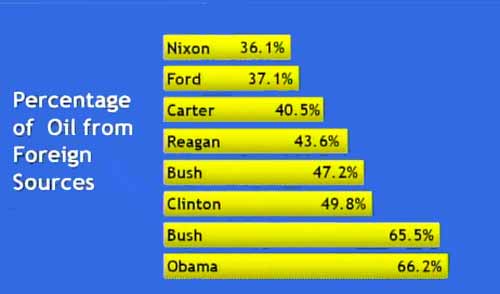
The US’s increasing reliance on foreign oil is mapped across a series of US
presidents who all said oil reliance would decrease on their watch.
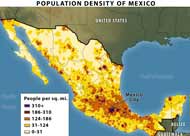 Mexico a failed state? Not exactly... The US consumes vast
amounts of abundant illegal narcotics which are derived from low-cost agricultural products needing minimal processing. Due to a long shared border with the US, Mexico has become a major grower,
processor and exporter. Because illegal drugs are outside normal market processes, price is determined by illegality rather than production costs. Thus extraordinary profits can be made by moving
narcotics from the Mexican side of the border to markets on the other side. Whoever controls the supply chain from fields to processing facilities and, above all, across the border, makes enormous
amounts of money. Various Mexican organisations — called cartels, though they don't function as such since real cartels involve a degree of cooperation among producers rather than open warfare — vie for
this business. These compete; each has its own supply chain. Typically, success in business competitions requires lowering prices and/or increasing quality, causing small, incremental shifts in
profits on the whole while reducing prices (for which increased market share compensates). Lawsuits are a preferred solution to unfair competition - but of course this isn't the case with illegal
goods. The surest way to increase smuggling profits is to take over competitors' supply chains. Given the profit margins involved, buying control would be irrational - a lower-cost solution would
be to just use force. Thus, each smuggling organisation has an attached paramilitary group designed to protect its own supply chain and seize competitors' supply chains. The result is ongoing
warfare between competing organisations. Given the money being made, these groups are well-armed, well-led and well-motivated. Membership in such groups offers impoverished young men extraordinary
opportunities for making money, far greater than available in legitimate activities. On the whole, all of Mexican society benefits from the inflow of billions of American dollars (though it also pays a
high price). Mexico a failed state? Not exactly... The US consumes vast
amounts of abundant illegal narcotics which are derived from low-cost agricultural products needing minimal processing. Due to a long shared border with the US, Mexico has become a major grower,
processor and exporter. Because illegal drugs are outside normal market processes, price is determined by illegality rather than production costs. Thus extraordinary profits can be made by moving
narcotics from the Mexican side of the border to markets on the other side. Whoever controls the supply chain from fields to processing facilities and, above all, across the border, makes enormous
amounts of money. Various Mexican organisations — called cartels, though they don't function as such since real cartels involve a degree of cooperation among producers rather than open warfare — vie for
this business. These compete; each has its own supply chain. Typically, success in business competitions requires lowering prices and/or increasing quality, causing small, incremental shifts in
profits on the whole while reducing prices (for which increased market share compensates). Lawsuits are a preferred solution to unfair competition - but of course this isn't the case with illegal
goods. The surest way to increase smuggling profits is to take over competitors' supply chains. Given the profit margins involved, buying control would be irrational - a lower-cost solution would
be to just use force. Thus, each smuggling organisation has an attached paramilitary group designed to protect its own supply chain and seize competitors' supply chains. The result is ongoing
warfare between competing organisations. Given the money being made, these groups are well-armed, well-led and well-motivated. Membership in such groups offers impoverished young men extraordinary
opportunities for making money, far greater than available in legitimate activities. On the whole, all of Mexican society benefits from the inflow of billions of American dollars (though it also pays a
high price). Examples of North Korean humour collected from defectors and refugees:
 An Englishman, a Frenchman, and a North Korean are having a chat. The
Englishman says: "I feel happiest when I’m at home, my wool pants on, sitting in front of the fireplace." An Englishman, a Frenchman, and a North Korean are having a chat. The
Englishman says: "I feel happiest when I’m at home, my wool pants on, sitting in front of the fireplace."
The Frenchman, a ladies’ man, says: "You English people are so conventional. I feel happiest when I go to a Mediterranean beach with a beautiful blonde-haired woman, and we do what we’ve got to do on the
way back."
The North Korean man says: "In the middle of the night, the secret police knock on my door shouting: Kang Sung-Mee, you’re under arrest! And I say, Kang Sung-Mee doesn’t live here, but right next
door! That’s when I'm happiest!"
 Kim Jong Il and Vladimir Putin are having a summit meeting in
Moscow. During a break, they’re bored, and decide to take a bet to see whose bodyguard
is more loyal. Putin is on the 20th floor and calls on his bodyguard Ivan, opens the window, and says: "Ivan, jump!" Kim Jong Il and Vladimir Putin are having a summit meeting in
Moscow. During a break, they’re bored, and decide to take a bet to see whose bodyguard
is more loyal. Putin is on the 20th floor and calls on his bodyguard Ivan, opens the window, and says: "Ivan, jump!"
Sobbing, Ivan says: "Mr President, how can you ask me to do that? I have a wife and child waiting for me at home..."
Putin sheds a tear himself, apologises to Ivan, and sends him away.
Next, it’s Kim Jong Il's turn. He calls his bodyguard Lee Myung Man and yells: "Lee Myung Man, jump!" Not hesitating for a split second, Lee Myung Man is just about to leap out the window when
Putin grabs him to prevent it and says: "Are you out of your mind? If you jump out this window, you’ll die! This is the 20th floor!" Nevertheless, Lee Myung Man still struggles, trying to
escape Putin’s embrace and jump. He says, "Prime Minister Putin, please let me go! I have a wife and child at home!"
What surprises me most is what a positive spin this joke puts on Putin.

A menu is the only piece of printed advertising that you are virtually 100% sure will
be read by the guest. Once placed in the guest’s hand, it can directly influence not only what he will order, but ultimately how much he will spend. People don't read menus from top to
bottom - or at least, their gaze doesn't necessarily linger at the top. For example the National Restaurant Association recommends that chefs place the dishes they want to sell on the centre of
the inside right page of the menu. People tend to remember the top two items on a list and the bottom item - so nothing goes in those spots by accident. Food service menus should use
pictures and design elements (such as different fonts) to highlight specific items. Further, "table tents" provide subtle cues to try a specialty drink or save room for dessert. Psychology
is at work on the wine list as well. The authors of the Wall Street Journal's "Tastings" column recommend always avoiding the second-least expensive bottle of wine, because restaurateurs
know that people will pick that one to avoid seeming too cheap.
 Well-known American author Joe McGinniss is a former Philadelphia Inquirer columnist who, at 26, wrote
The Selling Of The President about Richard Nixon. The book became a New York Times bestseller, making him the youngest writer to make the list. He is now working on a book to be called
Sarah Palin's Year Of Living Dangerously. "Neither of Palin's grandfathers was a bootlegger, nor did either come from Saskatchewan, Alberta or Manitoba" (as Palin claimed when speaking in
Canada recently), McGinniss said. "She must have felt that because her appearance in Hamilton did not receive extensive US media coverage she could say anything. And so, in an attempt to bond with
her audience - in order to assure that she received their adulation as well as her $100,000 speaking fee - she told them things she thought they'd like to hear, no matter whether true or
false." McGinniss continued, "I've been observing this tendency over the past several months, and it seems to have metastasized to the point where it might be called pathological sycophancy (a need to bask in the adulation of others that is so strong that it overrides honesty, decency and self-respect, causing the
sufferer not only to defame others with exaggerated falsehoods, but to invent from whole cloth engaging anecdotes about one's own personal and family history)." Unfortunately, a check with some
southwest Manitobans monitoring genealogical records shows that it’s Todd Palin, Sarah’s husband, who has the
roots in this province. And "bootleggers" describes a common way of life in the Canadian Prairies during the US prohibition of alcohol until 1933. Perhaps her comments were merely
taken the wrong way. Well-known American author Joe McGinniss is a former Philadelphia Inquirer columnist who, at 26, wrote
The Selling Of The President about Richard Nixon. The book became a New York Times bestseller, making him the youngest writer to make the list. He is now working on a book to be called
Sarah Palin's Year Of Living Dangerously. "Neither of Palin's grandfathers was a bootlegger, nor did either come from Saskatchewan, Alberta or Manitoba" (as Palin claimed when speaking in
Canada recently), McGinniss said. "She must have felt that because her appearance in Hamilton did not receive extensive US media coverage she could say anything. And so, in an attempt to bond with
her audience - in order to assure that she received their adulation as well as her $100,000 speaking fee - she told them things she thought they'd like to hear, no matter whether true or
false." McGinniss continued, "I've been observing this tendency over the past several months, and it seems to have metastasized to the point where it might be called pathological sycophancy (a need to bask in the adulation of others that is so strong that it overrides honesty, decency and self-respect, causing the
sufferer not only to defame others with exaggerated falsehoods, but to invent from whole cloth engaging anecdotes about one's own personal and family history)." Unfortunately, a check with some
southwest Manitobans monitoring genealogical records shows that it’s Todd Palin, Sarah’s husband, who has the
roots in this province. And "bootleggers" describes a common way of life in the Canadian Prairies during the US prohibition of alcohol until 1933. Perhaps her comments were merely
taken the wrong way.
 Of course Sarah Palin knows something about defence – after all, in high school she was on
the basketball team. Of course Sarah Palin knows something about defence – after all, in high school she was on
the basketball team.
 If the only difference between a hockey mom and a pit bull is lipstick, maybe hockey moms
shouldn’t be allowed anywhere near children! If the only difference between a hockey mom and a pit bull is lipstick, maybe hockey moms
shouldn’t be allowed anywhere near children!
 "Bless
us O dealer, for this, thy bud, which we are about to inhale from thy stash. Through Jamal our homie, Amen." This is Dick Dale
and Gail Farrell ("Gail and Dale") singing that well-known gospel song "One Toke over the Line, Sweet Jesus" on the Lawrence Welk Show on national tv in the 1970s. "Bless
us O dealer, for this, thy bud, which we are about to inhale from thy stash. Through Jamal our homie, Amen." This is Dick Dale
and Gail Farrell ("Gail and Dale") singing that well-known gospel song "One Toke over the Line, Sweet Jesus" on the Lawrence Welk Show on national tv in the 1970s.
At the conclusion of the song, Welk himself comes on camera and says, "And there you heard a modern spiritual by Gail and Dale."
Really. via the inimitable Lileks. Pompeii today, with Mt Vesuvius visible in the background

Along with Herculaneum, its sister city, Pompeii was destroyed and completely buried during a 2-day catastrophic eruption of the
volcano Mount Vesuvius in 79 AD. The eruption buried Pompeii under 22 metres of ash and pumice. The city was lost for nearly 1,600 years before its accidental rediscovery in 1592. Since
then, its excavation has provided an extraordinarily detailed insight into the life of a city at the height of the Roman Empire. The town was an important passage for goods that arrived by sea and had to
be sent toward Rome or Southern Italy along the nearby Appian Way. Agriculture, oil and wine production were also important. It was fed water by a spur from the Aqua Augusta (Naples) aqueduct,
built circa 20 BC by Agrippa. This main line supplied several other large towns and also the naval base at Misenum. The castellum (water works) in Pompeii has survived, still well-preserved, and
includes interesting details of the distribution network and its controls. Pompeii was a lively place. For example, on the floor of one of the houses (Sirico's), a famous inscription Salve,
lucru (Welcome, money), perhaps humorously intended, shows us a trading company owned by two partners, Sirico and Nummianus (but the latter could be a nickname, since nummus means coin, money). Wine
jars have been found bearing what is apparently the world's earliest known marketing pun, Vesuvinum (combining Vesuvius and the Latin word for wine, vinum).
 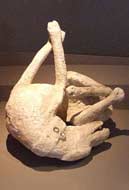 More: The aqueduct branched out through 3 main pipes from the Castellum Aquae, where the waters were collected before being
distributed to the city; although it did much more than distribute water, this it did with the prerequisite that in case of extreme drought, the water supply would first fail to reach the public baths (the
least vital service), then private houses and businesses, and when there was no water flow at all, the system would at last fail to supply the public fountains (the most vital service). (The pools in
Pompeii were used mainly for decoration.) At the time of the eruption, the town may have had as many as 20,000 inhabitants. It was located in an area in which Romans had their holiday
villas. Besides the forum, many other services were found: the Macellum (great food market), the Pistrinum (mill), the Thermopolium (a sort of bar that served cold and hot beverages), and cauponae (small
restaurants). An amphitheatre and two other theatres were found along with a palaestra or gymnasium. A hotel of 1,000 square metres was located a short distance from the town. During early
excavations of the site, occasional voids in the ash layer were discovered that contained human remains. It was realised that these were spaces left by decomposed bodies and so plaster was injected into
them to perfectly recreate the forms of Vesuvius's victims. What resulted were highly accurate and eerie forms of the doomed Pompeiani in their last moment of life, expression of terror often quite
clearly visible. More: The aqueduct branched out through 3 main pipes from the Castellum Aquae, where the waters were collected before being
distributed to the city; although it did much more than distribute water, this it did with the prerequisite that in case of extreme drought, the water supply would first fail to reach the public baths (the
least vital service), then private houses and businesses, and when there was no water flow at all, the system would at last fail to supply the public fountains (the most vital service). (The pools in
Pompeii were used mainly for decoration.) At the time of the eruption, the town may have had as many as 20,000 inhabitants. It was located in an area in which Romans had their holiday
villas. Besides the forum, many other services were found: the Macellum (great food market), the Pistrinum (mill), the Thermopolium (a sort of bar that served cold and hot beverages), and cauponae (small
restaurants). An amphitheatre and two other theatres were found along with a palaestra or gymnasium. A hotel of 1,000 square metres was located a short distance from the town. During early
excavations of the site, occasional voids in the ash layer were discovered that contained human remains. It was realised that these were spaces left by decomposed bodies and so plaster was injected into
them to perfectly recreate the forms of Vesuvius's victims. What resulted were highly accurate and eerie forms of the doomed Pompeiani in their last moment of life, expression of terror often quite
clearly visible.
 Cancer, heart disease, neurological disorders and other degenerative conditions are not due to
either genetics or environment, but both. The field of "epigenetics" reveals how people, plants and animals
start with a certain genetic code at conception but the choice of which genes are expressed (activated) is strongly affected by the environment. Expression of genes can change quite rapidly over
time, influenced by external factors, and those changes, which can be passed to immediate offspring, can literally hold the key to life and death. Many health problems, ranging from cancer to
cardiovascular disease and neurological disorders are caused at least in part by altered "histone modifications" and their effects on the reading of DNA in cells. Many diseases which have aberrant gene
expression at their root are linked to how DNA is packaged and the actions of enzymes such as histone deacetylases, or HDACs. In the case of cancer, tumour suppressor genes can cause cancer cells to die
by acting as a brake on unrestrained cell growth. But too much of the HDAC enzyme can switch off tumour suppressor genes even though the underlying DNA sequence of the cell – its genetic structure – has
not changed or mutated. If this happens, cells replicate without restraint, which is a fundamental characteristic of cancer. "HDAC inhibitors" stop this degenerative process and some have already
been identified in common foods, including sulforaphane in broccoli, indole-3-carbinol in cruciferous vegetables, and organosulfur compounds in garlic and onions. Butyrate, a compound produced in the
intestine when dietary fibre ferments, is another. This provides one possible explanation for why higher intake of dietary fibre helps prevent cancer. In cancer cells, tumour suppressors such as
p21 and p53 often become epigenetically silenced. HDAC inhibitors help turn these genes on again, thus tricking the cancer cell into committing suicide via apoptosis. Some therapeutic drugs used
for cancer treatment work in part by acting as HDAC inhibitors. Many degenerative health issues like heart disease, stroke, bipolar disorder and even ageing may all link to HDAC/histone
alterations. Cancer, heart disease, neurological disorders and other degenerative conditions are not due to
either genetics or environment, but both. The field of "epigenetics" reveals how people, plants and animals
start with a certain genetic code at conception but the choice of which genes are expressed (activated) is strongly affected by the environment. Expression of genes can change quite rapidly over
time, influenced by external factors, and those changes, which can be passed to immediate offspring, can literally hold the key to life and death. Many health problems, ranging from cancer to
cardiovascular disease and neurological disorders are caused at least in part by altered "histone modifications" and their effects on the reading of DNA in cells. Many diseases which have aberrant gene
expression at their root are linked to how DNA is packaged and the actions of enzymes such as histone deacetylases, or HDACs. In the case of cancer, tumour suppressor genes can cause cancer cells to die
by acting as a brake on unrestrained cell growth. But too much of the HDAC enzyme can switch off tumour suppressor genes even though the underlying DNA sequence of the cell – its genetic structure – has
not changed or mutated. If this happens, cells replicate without restraint, which is a fundamental characteristic of cancer. "HDAC inhibitors" stop this degenerative process and some have already
been identified in common foods, including sulforaphane in broccoli, indole-3-carbinol in cruciferous vegetables, and organosulfur compounds in garlic and onions. Butyrate, a compound produced in the
intestine when dietary fibre ferments, is another. This provides one possible explanation for why higher intake of dietary fibre helps prevent cancer. In cancer cells, tumour suppressors such as
p21 and p53 often become epigenetically silenced. HDAC inhibitors help turn these genes on again, thus tricking the cancer cell into committing suicide via apoptosis. Some therapeutic drugs used
for cancer treatment work in part by acting as HDAC inhibitors. Many degenerative health issues like heart disease, stroke, bipolar disorder and even ageing may all link to HDAC/histone
alterations.
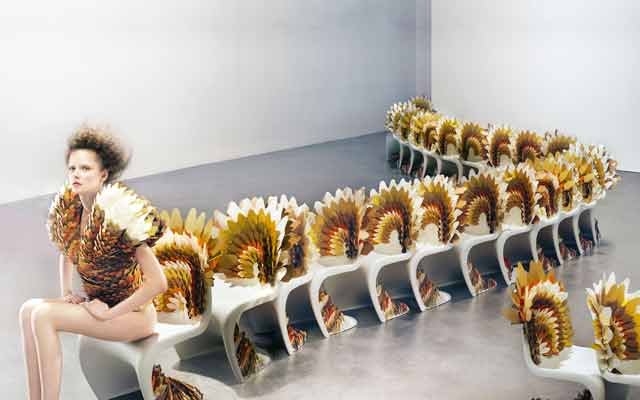
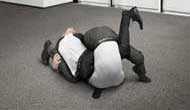  Khuong Nguyen has an odd sense of humour and an offbeat imagination. (The photo above is
from his website's flash intro.) He IS creative, though - I'll give him that. Perhaps it's just me, but I find his website annoying to use (and it appeared to have a couple of coding
errors). And I'm not entirely sure what the website's purpose is. Is he selling something? His skills? His services? His art? Is he 3D only? 3D and
photography? Khuong Nguyen has an odd sense of humour and an offbeat imagination. (The photo above is
from his website's flash intro.) He IS creative, though - I'll give him that. Perhaps it's just me, but I find his website annoying to use (and it appeared to have a couple of coding
errors). And I'm not entirely sure what the website's purpose is. Is he selling something? His skills? His services? His art? Is he 3D only? 3D and
photography? 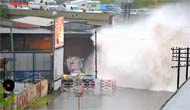
Giant wave caused by the arrival of a - what? - in Argentina. Answer: A train! (Luckily, it was not
electric.) NodalGenesis is a project aiming to create a biological pencil where nodes have life after being dropped. The creator (artist
or scientist? - I'm not sure) calls this "Manual Generative Artwork". (Must be artist.) His name is Bernat Fortet Unanue and he appears to be Spanish and a digital design
student. Noted. His website page appears to be designed for interactivity, but I couldn't make it work. In December 2009, he said more would be coming "soon" (a relative term, I
suppose). I liked this one item but I found his description of it somewhat less than enlightening.
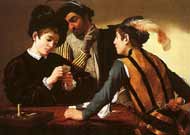 Gambling
with Other People's Money: Imagine a superb poker player who asks you for a loan to finance his nightly playing. For every $100 he gambles, he puts up $3 of his own money and wants you to lend him
the rest. You won't get a stake in his winning - he’ll merely give you a fixed rate of interest on your $97 loan. He can only lose $3 and his investment is leveraged such that if his $100 bet ends
up yielding $103, he has doubled his money as his $3 investment is now worth $6. Why would you, the lender, play this game? It’s a risky game for you. Suppose your friend starts out with a
stake of $10,000 for the night, putting up $300 himself and borrowing $9,700 from you. If he loses more than 3%, he can’t make good on your loan. Not to worry — he's extremely skilled and
prudent. He may lose a hand or two but by the end of the night, he’s always ahead. As long as he can make good on his debt, you’re fine. He wants to stay solvent, too. But if there's a
chance to win a lot of money, he's willing to a take a big risk. After all - he only has 3% at stake. To gain a really large pot, he'll take a chance on an inside straight - but you don't like
that, so you keep an eye on him to make sure he continues to be prudently successful. But suppose he becomes increasingly reckless, pursuing high-risk strategies that require making large bets that seem
worth it to him. How will you respond? You might stop lending altogether, concerned that you'll lose too much. Or - you might look for ways to protect yourself by, say, demanding a higher
rate of interest or asking him to put up his own assets as collateral. You might restrict his behaviour with rules. These are natural responses of lenders and creditors when borrowers take on
increasing amounts of risk. But this poker game isn’t proceeding in a natural state. There’s another person in the room: the US's favourite uncle - Sam. Uncle Sam is off in the corner,
keeping an eye on the game, making comments from time to time, and, every once in a while, intervening. {Let me get this straight: you are making 3% a day?] Gambling
with Other People's Money: Imagine a superb poker player who asks you for a loan to finance his nightly playing. For every $100 he gambles, he puts up $3 of his own money and wants you to lend him
the rest. You won't get a stake in his winning - he’ll merely give you a fixed rate of interest on your $97 loan. He can only lose $3 and his investment is leveraged such that if his $100 bet ends
up yielding $103, he has doubled his money as his $3 investment is now worth $6. Why would you, the lender, play this game? It’s a risky game for you. Suppose your friend starts out with a
stake of $10,000 for the night, putting up $300 himself and borrowing $9,700 from you. If he loses more than 3%, he can’t make good on your loan. Not to worry — he's extremely skilled and
prudent. He may lose a hand or two but by the end of the night, he’s always ahead. As long as he can make good on his debt, you’re fine. He wants to stay solvent, too. But if there's a
chance to win a lot of money, he's willing to a take a big risk. After all - he only has 3% at stake. To gain a really large pot, he'll take a chance on an inside straight - but you don't like
that, so you keep an eye on him to make sure he continues to be prudently successful. But suppose he becomes increasingly reckless, pursuing high-risk strategies that require making large bets that seem
worth it to him. How will you respond? You might stop lending altogether, concerned that you'll lose too much. Or - you might look for ways to protect yourself by, say, demanding a higher
rate of interest or asking him to put up his own assets as collateral. You might restrict his behaviour with rules. These are natural responses of lenders and creditors when borrowers take on
increasing amounts of risk. But this poker game isn’t proceeding in a natural state. There’s another person in the room: the US's favourite uncle - Sam. Uncle Sam is off in the corner,
keeping an eye on the game, making comments from time to time, and, every once in a while, intervening. {Let me get this straight: you are making 3% a day?]
 The Sofa looks like any of the small corner pubs with a
working-class clientele that dot German cities - and about the same amount of alcohol is consumed here. The Sofa has roughly 70 regulars, aged from 18 to 70. Football pennants hang on the walls and
a TV set above the bar on the left side is always on - but usually with the sound turned down. However, there is one critical difference between the Sofa and other bars. In this bar, some of the
costs are covered by taxpayer money from the city treasury. The Sofa is Germany's first drinking room, a sort of crash smoking room for alcoholics. Most of the people who frequent the place are
serious alcoholics who are allowed to bring their own cheap beer and sangria. The bar itself serves only soft drinks and strong coffee. Officials and residents have had enough of the stench of
urine, playgrounds full of broken glass and drunks causing disturbance late into the night. Most cities' attempts to solve the problem by removing drunks from public areas, imposing partial alcohol bans
(as in Hamburg's main train station), or blaring classical music from loudspeakers - have failed. The drunks simply move on and cause trouble elsewhere. The Sofa, on the other hand, was a success
from the start. The Sofa looks like any of the small corner pubs with a
working-class clientele that dot German cities - and about the same amount of alcohol is consumed here. The Sofa has roughly 70 regulars, aged from 18 to 70. Football pennants hang on the walls and
a TV set above the bar on the left side is always on - but usually with the sound turned down. However, there is one critical difference between the Sofa and other bars. In this bar, some of the
costs are covered by taxpayer money from the city treasury. The Sofa is Germany's first drinking room, a sort of crash smoking room for alcoholics. Most of the people who frequent the place are
serious alcoholics who are allowed to bring their own cheap beer and sangria. The bar itself serves only soft drinks and strong coffee. Officials and residents have had enough of the stench of
urine, playgrounds full of broken glass and drunks causing disturbance late into the night. Most cities' attempts to solve the problem by removing drunks from public areas, imposing partial alcohol bans
(as in Hamburg's main train station), or blaring classical music from loudspeakers - have failed. The drunks simply move on and cause trouble elsewhere. The Sofa, on the other hand, was a success
from the start.

The awesome beauty of Utah's Bryce Canyon (above and
at left) derives in part from erosion which has shaped colourful limestones, sandstones, and mudstones into a spectacular array of spires, fins, and pinnacles known as "hoodoos." These whimsically
arranged hoodoos remind viewers of church steeples, Gothic spires, castle walls, animals, and even people. Formations with names such as the Wall of Windows, the Chessmen, Thor's Hammer, Tower Bridge,
and the Poodle, suggest but a few of the likenesses. A legend of the Paiute Indians, who inhabited the area for hundreds of years before the arrival of European Americans, claims the colourful hoodoos
are ancient "Legend People" who were turned to stone as punishment for bad deeds. Why are non-gender children numerous enough to make this sign necessary?
Why aren't there three sorts of public restrooms: Men, Women, and Null?
(Apparently, it means that the mother is banned from bringing in a baby "who is not the same gender" as the change-room.
The sign is apparently saying that a parent is banned from bringing a boy into the girl's bathroom or a
girl into the men's bathroom.)
  
I woke up one day and everything in the apartment had been stolen and replaced with an exact replica.
I said to my roommate, "Can you believe this? Everything in the apartment has been stolen and replaced with an exact replica."
He said, "Do I know you?"
- Steven Wright
  
Every nation ridicules other nations, and all are right.
- Arthur Schopenhauer

For other updates click "Home" (for the latest) or "Next" (for older) below
|

 The Deepwater Horizon drilling rig (which burned then sank in the Gulf of Mexico) cost
the lives of many men and injured even more. The rig belonged to Transocean, world’s biggest offshore drilling contractor; it had been contracted through the year 2013 to BP at a cost of about $500,000
per day. The full drilling spread (with helicopters, support vessels and other services) cost almost $1,000,000 per day to operate in the course of drilling for oil and gas. It cost $350,000,000 to
build in 2001 and will cost at least double that to replace. The rig represented the cutting edge of drilling technology - floating, capable of working in up to 8,000 feet of water, and no mooring
required as it didn't need anchors, instead utilising a triply-redundant computer system using satellite positioning to control powerful thrusters that kept the rig on station within a few feet of its
intended location. (This is called Dynamic Positioning.) The rig had just finished cementing a steel casing in place at depths exceeding 18,000 feet and was about to move to its next drilling
location, returning later to complete work necessary to bring the well into production. Somehow, formation fluids must've leaked undetected into the wellbore. With a floating drilling rig setup
moving with waves, currents, and winds as it does, the main pressure control equipment sits on the seabed – the highest unmoving point. This equipment, the Blowout Preventers (BOPs), are controlled with
redundant systems from the rig. In the event of serious emergency, there are multiple Panic Buttons to hit and fail-safe Deadman systems that automatically engage. None were activated, suggesting
this blowout was especially swift to escalate, with 200- to 300-foot-high flames visible up to 35 miles away. The satellite photo emphasises the delicate (soon to be former?) ecosystem of the Louisiana
coast.
The Deepwater Horizon drilling rig (which burned then sank in the Gulf of Mexico) cost
the lives of many men and injured even more. The rig belonged to Transocean, world’s biggest offshore drilling contractor; it had been contracted through the year 2013 to BP at a cost of about $500,000
per day. The full drilling spread (with helicopters, support vessels and other services) cost almost $1,000,000 per day to operate in the course of drilling for oil and gas. It cost $350,000,000 to
build in 2001 and will cost at least double that to replace. The rig represented the cutting edge of drilling technology - floating, capable of working in up to 8,000 feet of water, and no mooring
required as it didn't need anchors, instead utilising a triply-redundant computer system using satellite positioning to control powerful thrusters that kept the rig on station within a few feet of its
intended location. (This is called Dynamic Positioning.) The rig had just finished cementing a steel casing in place at depths exceeding 18,000 feet and was about to move to its next drilling
location, returning later to complete work necessary to bring the well into production. Somehow, formation fluids must've leaked undetected into the wellbore. With a floating drilling rig setup
moving with waves, currents, and winds as it does, the main pressure control equipment sits on the seabed – the highest unmoving point. This equipment, the Blowout Preventers (BOPs), are controlled with
redundant systems from the rig. In the event of serious emergency, there are multiple Panic Buttons to hit and fail-safe Deadman systems that automatically engage. None were activated, suggesting
this blowout was especially swift to escalate, with 200- to 300-foot-high flames visible up to 35 miles away. The satellite photo emphasises the delicate (soon to be former?) ecosystem of the Louisiana
coast. Animals
Animals Animation
Animation Art of Playing Cards
Art of Playing Cards Drugs
Drugs Education
Education Environment
Environment Flying
Flying History
History Humour
Humour Immigration
Immigration Info/Tech
Info/Tech Intellectual/Entertaining
Intellectual/Entertaining Lifestyles
Lifestyles Men
Men Money/Politics/Law
Money/Politics/Law New Jersey
New Jersey Odds and Oddities
Odds and Oddities Older & Under
Older & Under Photography
Photography Prisons
Prisons Relationships
Relationships Science
Science Social/Cultural
Social/Cultural Terrorism
Terrorism Wellington
Wellington Working
Working Zero Return Investment
Zero Return Investment




